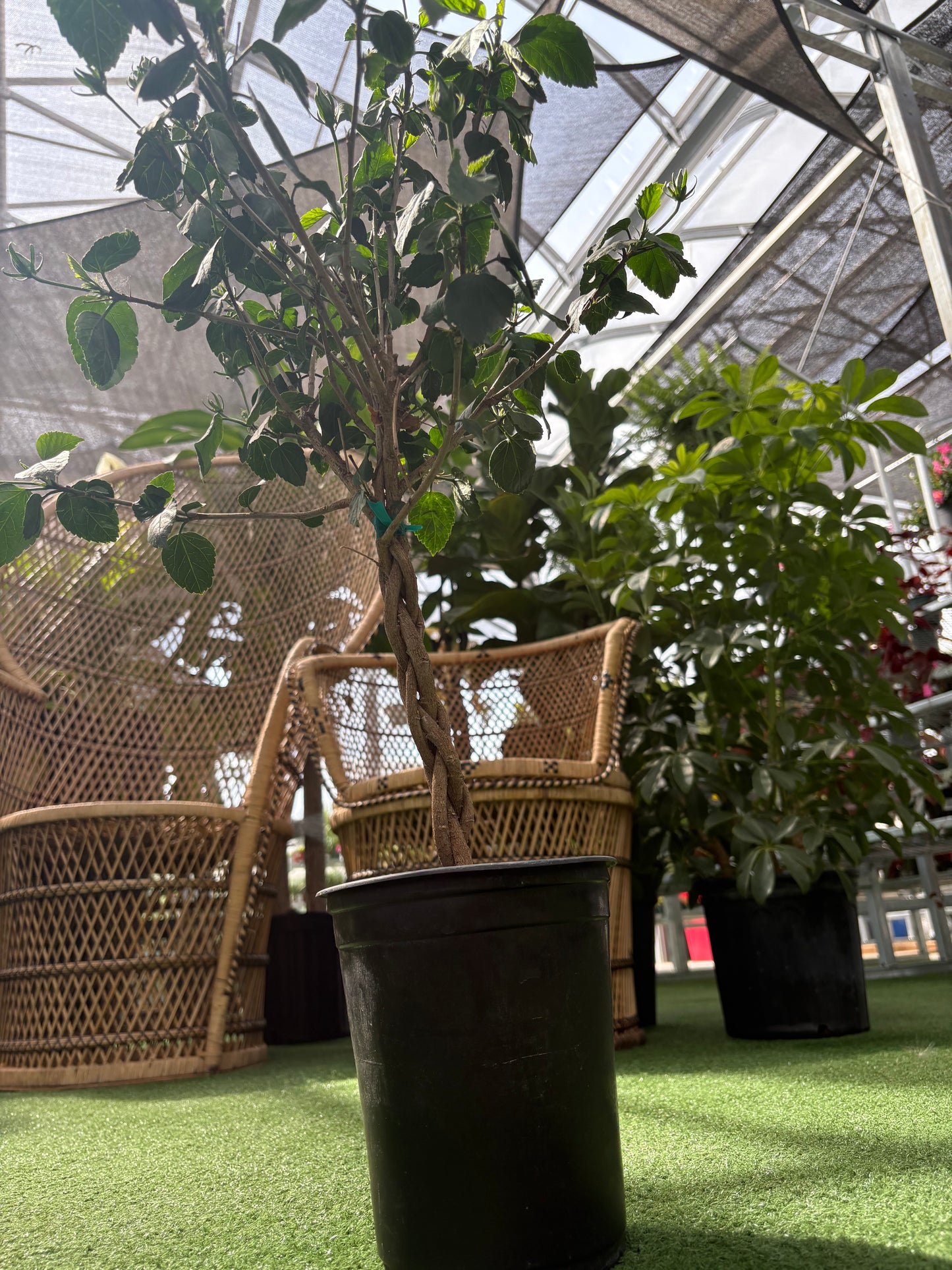Hibiscus Braid rosa-sinensis
Hibiscus Braid rosa-sinensis
Hibiscus Braid
Also known as Braided Hibiscus Tree — Tropical Hibiscus
The Hibiscus Braid is a showstopping tropical statement plant, celebrated for its large, vibrant blooms and elegant, braided trunk. With flowers in bold tropical hues and lush green foliage, this living sculpture brings instant color and sophistication to patios, balconies, or bright indoor spaces.
Beyond its visual appeal, the Braided Hibiscus Tree is a pollinator favorite, attracting butterflies and hummingbirds when placed outdoors. Perfect for creating that resort-inspired atmosphere at home, it offers a blend of natural beauty and refined artistry—an ideal centerpiece for sunny spots.
Sizing Description:
Medium: 6" / 15cm pot diameter — approx. 28" / 71cm height
Couldn't load pickup availability
Sun Requirements ▾
Watering Instructions ▾
Care Tips ▾
Share







